Written by Shelby Clifford
Sometimes multiple choice reading comprehension questions can be tricky to answer but there are lots of reading methods (in the form of mnemonics) that can help students select the right answer. Below you’ll find a list of different mnemonics that can easily be used when playing Dreamscape, taking an in-class reading test, or sitting for an ELA standardized exam. These methods vary in their way of approaching questions, so take the time to discover what method can work best for your students.
1. PRESTO
P – Pre-read the text features
R – Read over twice
E – Eliminate wrong answers
S – Search the story
T – Text evidence– Find the proof
O – Once the answer is found, circle
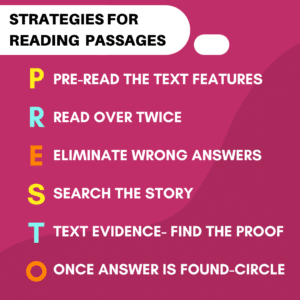
PRESTO encourages students to first scan the title, text, and question to gain a general sense of what is being asked, and then return to the text to read the passage carefully (sometimes twice). After reading, students should then eliminate choices that are clearly wrong, search the story to identify evidence to support the right answer, and, finally, bubble in the correct answer.
2. DREAMS
D – Don’t forget to read the title
R – Read the passage, then the question
E – Find evidence in the text
A – Avoid answers with no evidence
M – Mark your answer OR answers
S – Self check your choices
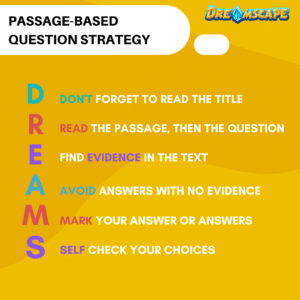
DREAMS is a great pneumonic to help students answer Dreamscape reading comprehension questions. This method encourages readers to review the title, passage and question before attempting to answer the questions. Additionally, it reminds readers that there can be more than one correct answer for each question (for “select all that apply” questions).
3. TPQ12
T – Highlight text features
P – Number paragraphs
Q – Make question notes
1 – Read it over once
2 – Read it over twice
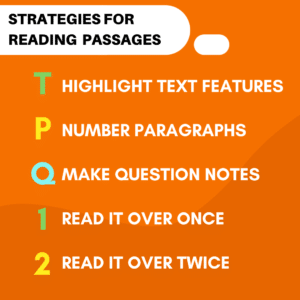
TPQ12 recommends paying close attention to all the individual aspects of the passage first (i.e. title, the numbering of lines, bolded/italicized words, etc.). After making note of these details, students should number the paragraphs and the lines. Finally, it directs the student to look at the question before fully taking the time to read the story over twice and coming to a conclusion on an answer.
4. UNRAVEL
U – Underline the title
N – Number the paragraphs
R – Read and preview the text
A – Are keywords circled?
V – Venture through the text
E – Eliminate wrong answers
L – Look for evidence
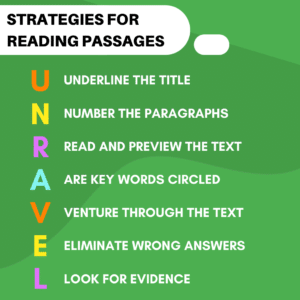
UNRAVEL, like TPQ12, tells the student to number before reading over the text and reminds the student to keep on track while writing. It helps the student ask themselves for clarification and steers them in the right track, so they can eliminate the wrong answers and look for evidence to support the right one.
5. PLORES
P – Make predictions
L – Look over passage
O – Organize passage into chunks
R – Read and make summaries
E – Underline supporting evidence
S – Self check questions
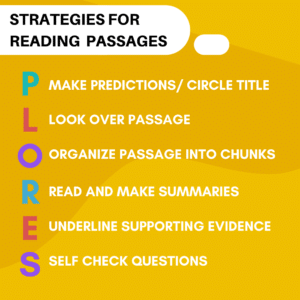
PLORES asks the student to make an initial prediction on how the story might unfold. It then brings the student into a comprehensive period where they must organize and summarize each passage in the story to fully grasp its concept. It also has a follow-up check where the student can look over their finalized work to ensure it has been answered properly.
6. TARGET
T – Read the title
A – Read all passages
R – Read the questions
G – Go back – read the story
E – Eliminate/Evaluate answers
T – Take your time
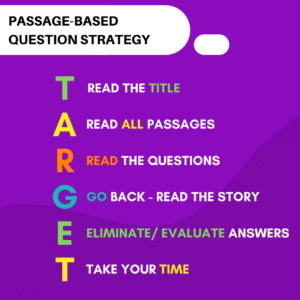
TARGET has very simple, clear instructions on how to tackle the question. This strategy would be best for an older classroom, where students can work independently with the steps given. TARGET instructs the student to read over the text and the questions before picking out the answer that fits most with the question.
All of these mnemonics do a stellar job in providing easy, memorable tips that not only prepares your students for the test, but also helps to build a strong foundation for reading comprehension as they progress academically. Try a few out! Maybe these reading methods can help your students, or maybe they can help you create one of your own.